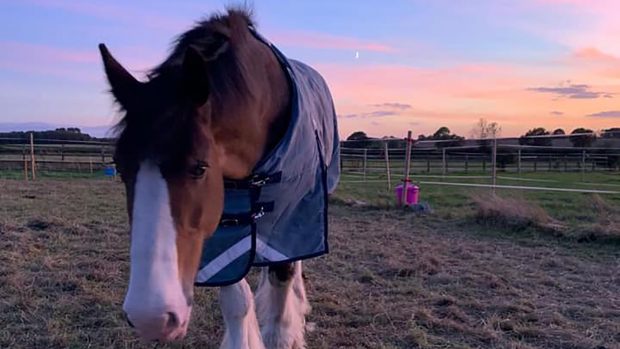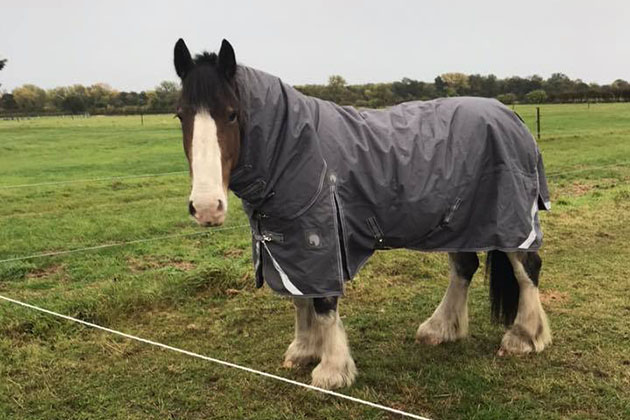The theme in our household recently has been “facing your fears”. My wife, Penny, has had a bit of a phobia about lifts for a few years now and last weekend, after seeing a cognitive behavioural therapist (CBT) a few times, then spent the day whizzing up and down all the lifts in the local shopping centre!
My son, Jack, broke his two front teeth last week and had to face his fear of needles when he went to the dentist to get caps fitted, while my daughter, who is very keen on her gymnastics, has recently found the courage to perfect her backflips unaided.
As for me, I have been getting out of my comfort zone by confronting my lack of knowledge about technology, which in this day and age as a business owner, is a bit of a hindrance!
I mention all of this, as overcoming fears is such a major part of my job; the horse’s fears, my own fears, and those of my clients. With horses, fear is a survival instinct that results in flight, and it is this instinct that I have to work with and overcome in the initial stages of their training. As for my own fears, I am often asked whether difficult horses scare me. Although I could never say that I definitely won’t fall off, I am never worried about getting on a horse. This is mainly because I have faith in my training programme, I prepare well and I have experience on my side.
With my clients, fear either manifests itself as a result of an accident or bad experience, or it gradually creeps up and becomes debilitating in that person’s interactions with horses. Either way, fear prevents that person being the calm, consistent and decisive leader that their horse needs them to be, and unless the horse is experienced and steady, the partnership often breaks down. Very often, I see the following pattern whereby a rider increasingly limits their riding experiences to those in which they feel safe, for example, by only riding in an arena. The trouble with this is, the horse’s experience is also being limited to a very “sanitised” environment. Unfortunately, no one can totally control the environment they are in, and when the unexpected happens, the horse’s response will be to flight and the rider won’t have the tools to deal with it.

One of my riders at camp
That is why in many of my clinics and the camps that I run (pictured above and top), much of what I aim to do is to get riders and their horses out of their comfort zones, while being in a safe environment with me giving them the tools to handle any unwanted reactions in their horse. Most of the time, just having a purpose, such as riding over a course of poles rather than trotting in circles, makes people ride in a more positive, forward way. It is amazing to see the transformation over the course of a camp of a nervous rider who won’t get out of a trot to someone who is happily cantering across an open field wielding a polocrosse racquet or popping over jumps!
Occasionally, I get a case whereby a horse has developed a fear or an association that is so strong it is incredibly difficult to change. I have a lovely little horse in at the moment that is great to ride and handle, but has what I can only describe as a deep-rooted phobia of being stabled or boxed. I have had similar cases before, but this is by far the worst I have dealt with, as he would rather kill himself by throwing himself at the walls than be shut in. It is a very stressful situation for all involved; for the horse, the owner and for me, where the main concern in the horse’s welfare. I have asked the question whether it is worth the risk, but the present situation is unmanageable for the owner and he is only getting worse.
Continued below…
Like this? You might also enjoy reading these:
Jason Webb’s blog: Tackling rearing
Jason Webb’s blog: Boosting confidence
Jason Webb’s blog: Serious prospects
He has been with us now for two weeks and we are starting to see a change through work that has parallels to the CBT therapy that Penny had for her lift phobia. The basic premise is that we have a scale of situations that he wants to get out of; the lowest being in a pen in an open field to the highest level of being in his owner’s 3.5 tonne horsebox. At each stage, I have worked with him until he becomes comfortable in that situation by waiting for him to calm down and when he is calm, he is taken out. This is repeated until there are no signs of fretting and the length of time in that situation is increased. This is obviously not going to be a quick fix, but I have a lot of faith in time and I am hoping that we can get him to a manageable state before too long.
So, to wrap up this blog, if you have started 2017 without any goals or resolutions, perhaps a good one is to get out of your comfort zone with your horse. Get prepared and then go for that hack past the nasty barking dog, enter a dressage competition, go to a jumping clinic or try a new discipline; I bet your horse will appreciate it and who knows where it might lead!
Jason



